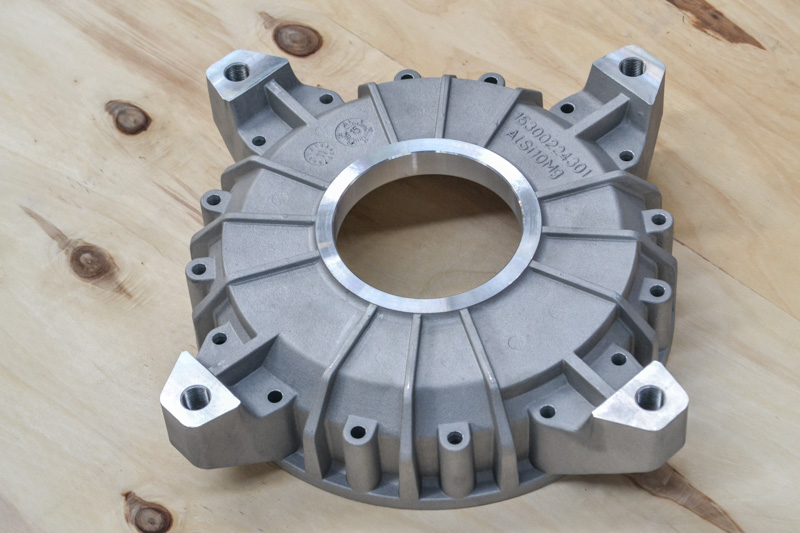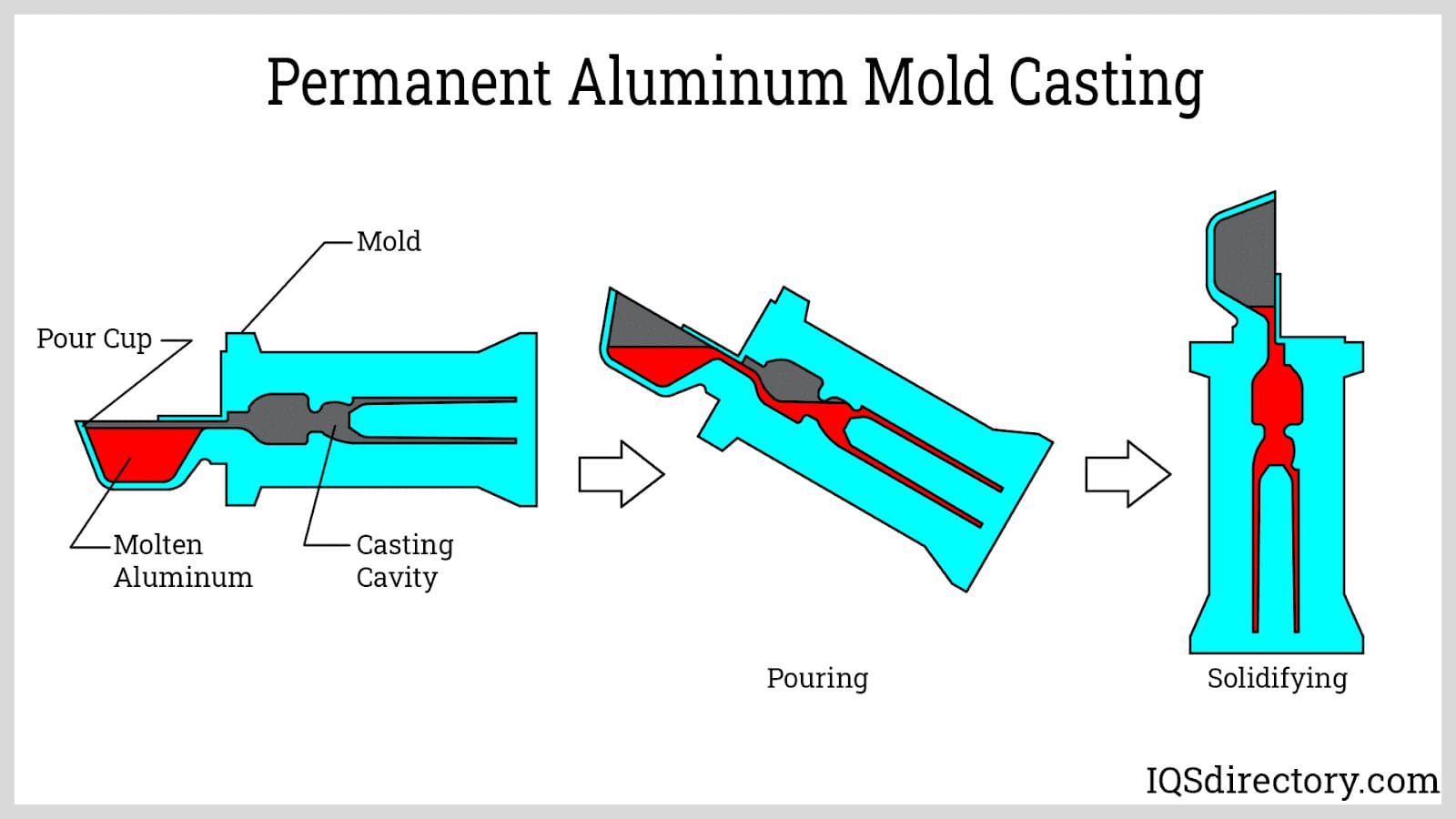Checking Out the Versatile Utilizes and Applications of Light Weight Aluminum Castings in Modern Industries
Light weight aluminum castings have come to be important to various modern-day markets as a result of their unique residential or commercial properties. They use considerable benefits in weight reduction, thermal conductivity, and corrosion resistance. From automobile advancements to applications in consumer items and construction, their versatility is remarkable. Yet, real extent of their influence extends beyond instant advantages, meaning wider effects for sustainability and efficiency. What exists ahead for light weight aluminum spreadings in an ever-evolving commercial landscape?
Automotive Sector Innovations
The auto sector has actually significantly embraced aluminum castings to boost lorry efficiency and effectiveness. By making use of aluminum, manufacturers can produce lighter parts, which add to boosted fuel economic climate and reduced exhausts. Secret applications consist of engine blocks, transmission situations, and structural parts, where the material's strength-to-weight proportion supplies durability without including excess weight.
Aluminum spreadings also provide superior thermal conductivity, which aids in far better warm dissipation, thus boosting engine performance. Innovations in casting technologies, such as die casting and sand spreading, allow the production of complicated geometries, allowing for ingenious designs that enhance space and functionality.
The recyclability of light weight aluminum straightens with sustainability objectives in the automobile sector, promoting eco-friendly techniques. As the sector remains to introduce, making use of light weight aluminum castings is likely to expand, driving more advancements in car design and effectiveness.
Aerospace Improvements and applications
While the aerospace industry proceeds to prioritize weight reduction and fuel efficiency, light weight aluminum castings have emerged as an important product selection for various applications. Their light-weight nature, combined with high strength-to-weight proportions, permits for considerable renovations in airplane performance and performance. Aluminum spreadings are typically used in architectural components, such as fuselage frameworks and wing parts, where lowering weight is essential.
Current improvements in aluminum casting innovations, consisting of boosted alloy formulas and precision casting strategies, have actually even more boosted the product's performance capacities. These innovations allow the manufacturing of complicated geometries and elaborate layouts while keeping structural integrity. Furthermore, aluminum's outstanding rust resistance warranties durability and reliability in severe aerospace environments.
As the aerospace market progressively accepts sustainability, light weight aluminum spreadings provide a recyclable service that lines up with eco-friendly techniques, making them a critical component in the development of next-generation airplane.
Durable Goods and Everyday Products
As customers progressively look for light-weight yet sturdy materials for everyday products, aluminum castings have gotten popularity in different customer products. The unique properties of light weight aluminum, including its resistance to rust and outstanding thermal conductivity, make it an ideal choice for products like cookware, house devices, and exterior equipment. For example, aluminum cast pots and frying pans give also heat circulation, enhancing cooking efficiency. Additionally, using light weight aluminum in things such as bike structures and baggage ensures a balance between stamina and portability. Suppliers value aluminum spreadings for their convenience, as they can be conveniently molded right into complicated forms while keeping architectural stability. The ability to reuse light weight aluminum without degrading its properties straightens with growing customer choices for lasting products. Generally, aluminum castings are essential to the manufacturing of sturdy, functional, and cosmetically pleasing consumer products, satisfying the needs of modern way of lives.
Building And Construction and Architectural Utilizes
Light weight aluminum castings have ended up being an essential part in building and construction and architectural layout, especially as a result of their stamina and light-weight nature. These properties make aluminum a suitable option for various applications, consisting of architectural aspects, exteriors, and ornamental features - Metal Castings. Architects and builders progressively use light weight aluminum castings for home window frames, doors, and roof covering systems, enhancing both performance and aesthetic appeals. The material's resistance to deterioration additionally extends its life-span, lowering maintenance expenses and making certain longevity in varied ecological problems
In addition, light weight aluminum can be conveniently formed into detailed styles, enabling innovative building expressions. Its adaptability helps with the creation of personalized pieces that meet certain design demands, from ornate barriers to intricate assistances. As sustainability ends up being a priority, aluminum's recyclability includes in its appeal in environmentally friendly construction techniques. On the whole, light weight aluminum castings are changing the building sector by providing light-weight, long lasting, and visually attractive options.
Digital and electric Parts
Light weight aluminum castings play an essential function in the production of lightweight electrical rooms, which boost transportability and efficiency in various applications. On top of that, their exceptional thermal conductivity makes them ideal for heat sinks, ensuring peak performance and durability of digital components. Furthermore, aluminum's conductive residential properties contribute to its use in different electrical conductors, emphasizing its value in contemporary technology.
Light-weight Electrical Enclosures
Lightweight electrical rooms play a necessary function in safeguarding sensitive digital parts from ecological variables and physical damage. Built from light weight aluminum castings, these enclosures are valued for their strength-to-weight ratio, making them ideal for different applications throughout industries. Their lightweight nature help in lowering total system weight, which is vital in mobile and portable electronics. Moreover, aluminum's rust resistance boosts toughness, extending the lifespan of the enclosed components. The her explanation ability to mold and mildew aluminum right into intricate shapes permits personalized layouts, accommodating certain needs while making sure reliable heat dissipation. Additionally, these rooms can be conveniently incorporated into existing systems, offering adaptability and adaptability in contemporary technical environments. Overall, lightweight aluminum units greatly add to the efficiency of electronic devices.
Warmth Sinks and Conductors
While lots of products are utilized in digital parts, aluminum spreadings stand apart for their effectiveness in warm monitoring as heat sinks and conductors. Their superb thermal conductivity enables for effective warmth dissipation, which is essential in preventing the getting too hot of electronic devices. Aluminum's light-weight nature better enhances its suitability for applications where weight is a substantial aspect, such as in aerospace and automotive industries. Additionally, light weight aluminum spreadings can be conveniently formed right into complicated shapes, providing style versatility for maximizing thermal efficiency. The deterioration resistance of aluminum likewise adds to the durability and dependability of these components in different environments. As innovation breakthroughs and gadgets end up being more portable, the demand for effective warmth administration services, like aluminum spreadings, remains to expand.
Marine Industry Utilization
The marine industry progressively relies upon aluminum castings for their exceptional resilience and deterioration resistance. These homes make light weight aluminum an optimal option for different applications, including boat hulls, engine parts, and marine equipment. The lightweight nature of aluminum spreadings allows boosted fuel effectiveness and easier ability to move in boat, which is important for both recreational and business vessels.

Aluminum spreadings he said also supply significant cost benefits because of their long life expectancy and reduced upkeep requirements, lowering the general functional costs for aquatic operators. Additionally, the versatility of light weight aluminum permits intricate layouts that can fulfill specific performance needs.
Makers in the marine sector utilize innovative casting techniques to generate intricate shapes, ensuring that components meet rigorous safety and security and performance requirements. As the demand for high-performance marine vessels grows, light weight aluminum castings are placed as an essential product in enhancing the performance and long life of aquatic equipment.
Sustainability and Recycling in Light Weight Aluminum Casting

Light Weight Aluminum Recycling Refine
Recycling aluminum plays an important role in minimizing ecological influence and conserving sources within the casting industry. The light weight aluminum reusing procedure begins with the collection of scrap aluminum, which can include old components, producing waste, and post-consumer products. This scrap is after that arranged, cleaned, and shredded right into tiny pieces to assist in melting.
When prepared, the light weight aluminum scrap is thawed in a heater at reduced temperature levels than primary light weight aluminum production, greatly decreasing power consumption. The liquified aluminum is then cast into ingots or various other shapes for reuse in various applications - Aluminum Foundry. This closed-loop system enables the reliable healing of aluminum, maintaining its properties while lowering the requirement for virgin materials. The recycling process is a crucial part of lasting methods in light weight aluminum spreading.
Environmental Benefits
While aluminum spreading plays a critical function in different markets, its ecological benefits are specifically remarkable regarding sustainability and source conservation. The light-weight nature of light weight aluminum adds to energy effectiveness in transportation, minimizing gas intake and discharges. Furthermore, light weight aluminum casting promotes the usage of recycled materials, greatly lowering the energy needed for production compared to primary aluminum. This reusing process decreases waste and minimizes the ecological effect related to mining and refining raw products. Light weight aluminum is 100% recyclable without deterioration of its residential properties, promoting a lasting lifecycle. By choosing light weight aluminum spreading, markets can significantly reduce their carbon impact while promoting source effectiveness, making it an important choice in the quest of ecologically friendly production techniques.
Closed-Loop Equipments

Frequently Asked Questions
What Are the Trick Advantages of Light Weight Aluminum Castings Over Various Other Products?
Light weight aluminum castings use light-weight properties, outstanding rust resistance, and high strength-to-weight proportions. They can be quickly formed into intricate shapes, provide good thermal and electrical conductivity, and are economical, making them better over several alternate products.
Exactly how Is the Aluminum Casting Refine Eco-friendly?
The light weight aluminum spreading procedure is eco-friendly as a result of its recyclability, reduced power intake, and lowered waste production. Its ability to make use of recycled materials minimizes the carbon impact, advertising sustainability within manufacturing practices.
What Prevail Difficulties in Light Weight Aluminum Casting Production?
Typical obstacles in aluminum casting production include keeping dimensional precision, managing thermal contraction, preventing defects like porosity and incorporations, guaranteeing correct mold and mildew style, and enhancing manufacturing efficiency while decreasing product waste and environmental impact.
Exactly How Do Light Weight Aluminum Castings Contrast in Cost With Various Other Production Methods?
Aluminum spreadings commonly provide affordable costs compared to various other producing techniques, particularly for tool to high-volume manufacturing. Their lower initial tooling expenses and effective material use can result in desirable business economics gradually.
What Future Patterns Are Expected in Light Weight Aluminum Casting Innovation?
Future fads in aluminum spreading technology are anticipated to consist of advancements in automation, improved alloy structures, enhanced recycling techniques, and the combination of 3D printing, all focused on increasing effectiveness, decreasing costs, and decreasing ecological influence.
Recent advancements in aluminum casting technologies, consisting of enhanced alloy formulations and precision spreading techniques, have even more improved the material's efficiency capacities. Light weight aluminum castings have ended up being an essential element in building and building layout, particularly due to their strength and light-weight nature. The light weight aluminum recycling procedure begins with the collection of scrap light weight aluminum, which can include old components, manufacturing waste, and post-consumer items. When prepared, the aluminum scrap is thawed in a heating system at reduced temperature levels than main aluminum production, substantially reducing energy intake. Additionally, light weight aluminum spreading helps with the usage of recycled products, significantly lowering the power needed for manufacturing compared to primary light weight Discover More Here aluminum.